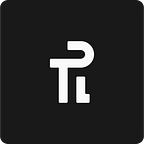What is Blockchain?
Since Squid Game ranked number one on Netflix’s Global Chart last October, we will assume that most of your readers have already seen the series. Now, let’s put all the geeky and nerdy tech stuff and imagine a group of people playing marbles (episode 7).
Imagine our game participants are separated into two groups; “Greens” and “Reds”. In our game, Greens exchange marbles with each other. Unlike Squid Game, we should not care about why they are exchanging marbles. What we need to be focused on is how they handle them.
Now, participant 456 wants to give 9 marbles to participant 001. In our imaginary game rules, every marble handling activity needs to be validated to avoid cheating and stealing, and this is Red’s responsibility.
Red participants need to check if 456 has 9 or more marbles to handle to 001. When the transaction has been validated, Red records the transaction in her or his personal notebook. All transactions are being recorded one after another, every transaction references previous transactions, and there are no “same-time” transactions.
As you can see, every new transaction (newest is on the bottom here) refers to the previous one by their unique identifier: “Transaction ID”. What also needs to be noted is that all Reds’ notebooks are identical, which means that you will find the same records in the same form in every notebook. Hereby, even if I steal or modify data in any particular notebook, it will be useless, because other Reds still have their notebooks unchanged, and they can reconcile with each other.
Let’s sum up the process:
- 456 handles marbles to 001
- Reds work to validate the transaction (they need to confirm that 456 has more than 9 marbles)
- Each Red records every confirmed transaction into their personal notebook.
This is how Blockchain works. The marbles are pieces of data, which are called blocks. Every new block has reference to the previous transaction block, thereby forming a chain of blocks.
The green participants are network users, or literally every device that operates in the network. Every block is validated by Reds or miners. So in the real case of Blockchain, all miners in the world store Blockchain history locally on their device (the notebook). That means the history of transactions is accessible on all devices (network participants at the same time). This is why Blockchain is called a decentralized system. Please note that in Blockchain, unlike in Squid Game, miners (or Reds) are also allowed to exchange blocks (marbles) as much as the participants (Greens) can.
So this is what we get:
- Marbles = blocks
- Notebooks = chains
- Greens and Reds = network
In the real Blockchain data, the blocks contain different information, for example:
- Every block contains information about currency transfer, this is the most common application of Blockchain — this is what we call cryptocurrency.
- Every marble, there comes a note with information. For example, one note contains a certificate of ownership of an asset (For example, “The one who has this note owns a Tesla”).
- The data may also contain medical record history in blocks.
Transaction Validation (or Mining)
Please note that the next discussion is mostly related to cryptocurrency. Different blockchains have different validation rules and procedures. Now let’s go back to Squid Game.
Imagine that in one room, there is a large box of marbles. As we know, after the participants (Greens) state that they want to handle marbles to each other, Reds needs to validate the transactions. When the transactions are initiated, Reds compete to validate them as soon as possible. The winner of the competition gets all the marbles in the marble box. This is called a mining reward. To win the competition, Reds should check whether the transactions can be executed (in our case, it is just a sanity check, that participant 456 has 9 or more marbles). Reds should also be the first ones to solve a difficult mathematical problem and the solution of that math problem needs to be double-checked by all other Reds. The mining competition here is called Proof of Work. So now we have a mathematical problem as “Proof” of Red’s work on transaction validation. The same thing is in Blockchain, Proof of Work is just evidence that miners (Reds) are seriously invalidating the transactions.
Now, this is what we get:
- Reds = miners
- Mathematical problems = Proof of Work
- Marbles on the box = mining reward
Why is Blockchain Important?
Blockchain can improve payment transparency, efficiency, trust, and security as well as reduce the cost for financial services firms and users. Earlier, the payments from one bank to another bank used to take up to a week, with the help of blockchain it is transferred instantly. The use of digital currencies and distributed ledger technologies make payment faster, cheaper, and more convenient. The authenticity of a transaction is verified and confirmed by all participants, and no intermediary fee is required on every transaction.
For now, Blockchain’s most frequent application is Cryptocurrency and Decentralised Finance (DeFi). But we believe that there is a great deal of opportunity in the applications in different industries, like healthcare, supply chain, government, and other industries. Sure it is still a complex thing even after all this Squid Game analogy, but we hope this article gives the basic understanding to learn more or even make your own blockchains.
Source: techdayhq, Investopedia
